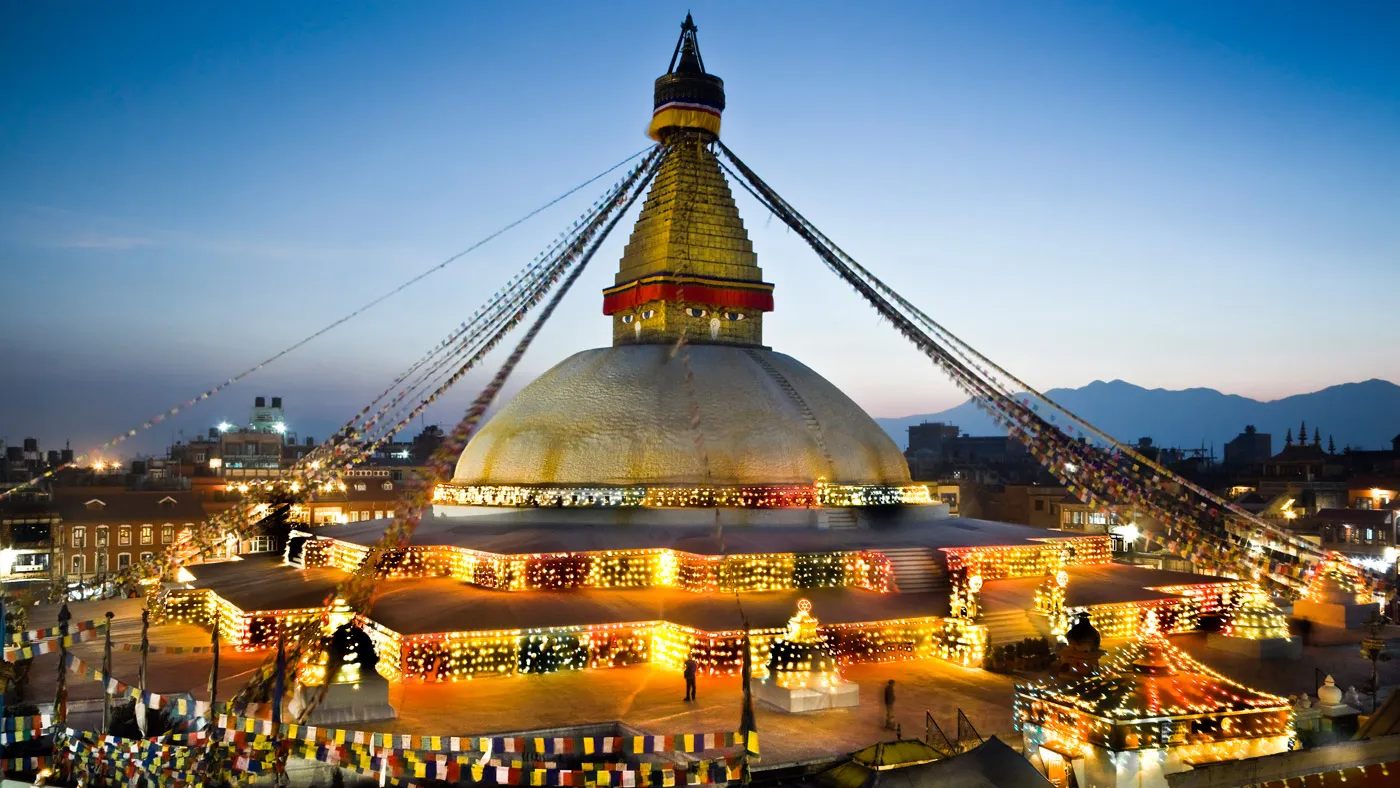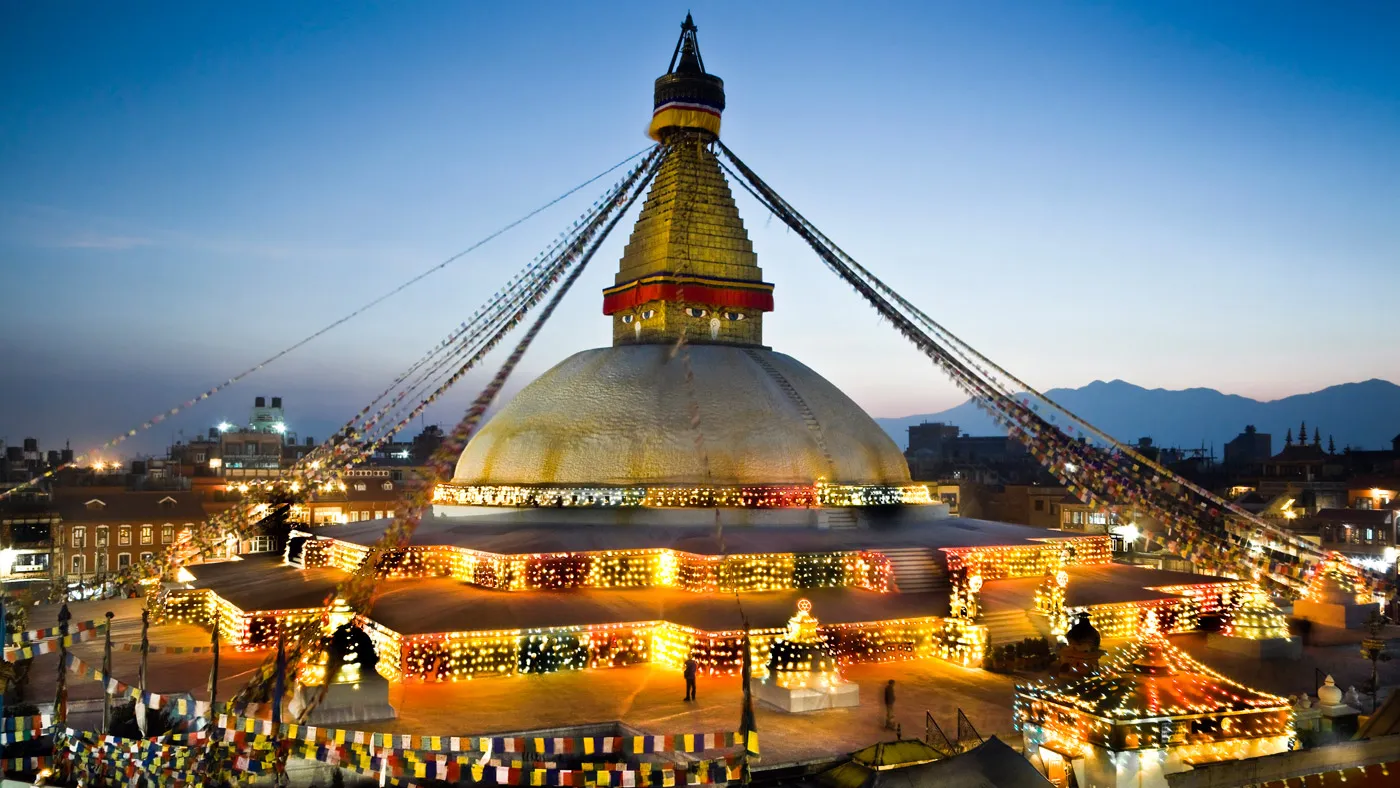 Nepal Tourism
Nepal Tourism
4 Days - 3 Nights Nepal Package
Explore the beauty of Nepal tour packages with Antares..

Nepal Valley since the 4th century AD, establishing a rich Hindu-Buddhist culture. Later, the Gorkha principality was founded by Rajput warriors from India. In 1769, the Gorkhas expanded their territory beyond the present-day borders of Nepal. After their incursions into northern India led to defeat by the British, Nepal lost some territory to British India but maintained its independence and fostered close relations with the British. Since India's independence in 1947, Nepal has continued to have strong ties with its southern neighbor.
Nepal, once the world's only Hindu kingdom, was ruled by a hereditary prime ministership until 1951. The country held its first democratic elections in 1959. However, in 1960, King Mahendra dismissed the cabinet, dissolved parliament, and banned political parties. The 1962 constitution established a nonparty Panchayat (council) system of government. In 1980, a referendum approved a modified Panchayat system, leading to direct parliamentary elections in 1981.
A dispute with India led to a border blockade from March 1989 to July 1990, causing an economic crisis that spurred demands for political reform. After months of violence, King Birendra dissolved parliament, and in April 1990, the opposition formed an interim government. A new constitution was enacted on November 9, 1990, creating a constitutional monarchy and a bicameral legislature. In the multiparty elections of May 1991, the centrist Nepali Congress party won, with the Communists becoming the main opposition. Mid-term elections in November 1994 resulted in a hung parliament, and the Communists formed a minority government as the largest single party.
Nepal's culture is profoundly influenced by its music, architecture, religion, and traditions. The vibrant streets are teeming with temples, churches, monasteries, and other religious buildings, creating a unique and bustling atmosphere filled with both people and animals navigating the narrow cobblestone lanes.
Nepal is home to approximately thirty-six distinct ethnic groups, each with its own languages and religions. This diversity is reflected in its music, which includes pop, religious, classical, and folk genres. Nepalese music has been significantly influenced by harmonies from Tibet and India. Traditionally, women, even those from musical castes, only play music on specific occasions, such as all-female wedding parties.
Nepalese architecture is an integral part of the country's cultural heritage and can be categorized into three main styles: the stupa style, the pagoda style, and the shikhara style.
Nepal is constitutionally a Hindu kingdom that legally prohibits discrimination against other religions. Since the 1950s, over 80 percent of the population has adhered to Hinduism. Buddhism is the second-largest religion, practiced by about 11 percent of the population, followed by Islam at approximately 4.2 percent and the Kirat religion at around 3.6 percent.
Nepal has many customs and beliefs that may be unfamiliar or challenging to outsiders. It's important to respect these traditions while visiting. For example, don't be offended if a Nepalese person hesitates to shake hands, as Western customs are relatively new in Nepal. The traditional greeting is "Namaste," performed by pressing the palms together in a prayer-like gesture. When it comes to dining, it's customary to eat and handle food with the right hand, as the left hand is used for personal hygiene. Most Nepalese eat with their hands, and utensils like forks and spoons are not commonly used.
Dress code is also important in Nepal. Men should avoid going shirtless while walking or trekking, and although shorts are acceptable, long pants are preferred. Women are advised to wear long skirts that cover their ankles to avoid drawing unwanted attention. Public displays of affection between men and women, such as kissing, hugging, cuddling, or holding hands, are generally considered inappropriate.
Nepalese cuisine is simple yet flavorful, influenced by various cultures throughout its development. The cuisine varies among ethnic groups and castes, depending on the available and affordable ingredients. Indian, Chinese, and Tibetan flavors are evident in Nepalese meals, though the cuisine retains its unique flair. Nepal's climate allows for the cultivation of rice, lentils, wheat, corn, and potatoes. Despite its simplicity, Nepalese cuisine is rich in flavor, utilizing spices and seasonings like ginger, garlic, coriander, pepper, cumin, chilies, cilantro, mustard oil, ghee, and occasionally yak butter. The staple diet includes Dal (lentils), Bhat (rice), and Tarkari (curried vegetables). Due to religious reasons, beef is rarely consumed in Nepal. Popular local drinks include tongba and thon (rice beer).
Nepal’s weather is generally predictable and pleasant, divided into four climatic seasons:
The monsoon season lasts from the end of June to mid-September, bringing about 80% of the annual rainfall. The rest of the year is dry. Spring and autumn are the most pleasant seasons. Winter temperatures can drop to freezing, with significant snowfall in the mountains. Summer and late spring temperatures range from 28ºC (83ºF) in the hill regions to over 40ºC (104ºF) in the Terai. In winter, Terai temperatures range from 7ºC (45ºF) to 23ºC (74ºF). The central valleys experience temperatures below freezing, with a maximum around 12ºC (54ºF). Higher elevations are much colder. The Kathmandu Valley, at 1,310m (4,297ft), has mild temperatures from 19-27ºC (67-81ºF) in summer and 2-20ºC (36-68ºF) in winter.
The best time to visit Nepal is between September and December, after the monsoon and before winter. During these months, the valley is lush with blooming flowers and the air is clear. Plains are humid but more tolerable than the summer heat.
For hilly areas, the best time to visit is in May and June, with temperatures around 22-25ºC (72-77ºF). Nights can be chilly in the lower Himalayas but are generally comfortable. Monsoons make the mountainous areas dangerous due to slippery conditions and landslides. Post-monsoon, from September onwards, is ideal for hill tours.
In winter, heavy snowfall and avalanches make most hilly areas inaccessible. However, those who enjoy snow can visit the lower Himalayan regions, which look picturesque under a blanket of snow.
Getting Into Nepal (By Land)
You can travel overland to Nepal from both India and Tibet:
Getting Into Nepal (By Air)
Kathmandu is Nepal's only international airport. Several international airlines offer direct flights to Kathmandu:
Visa
A visa is required to enter Nepal and can be obtained from any Royal Nepalese Embassy or Consulate, or at entry points in Nepal. Visa options include:
There are many popular and best-selling tour packages available in India. Here are some of the most popular tour packages:
 Nepal Tourism
Nepal Tourism
Explore the beauty of Nepal tour packages with Antares..
 Nepal Tourism
Nepal Tourism
Explore the beauty of Nepal tour packages with Antares..
 Nepal Tourism
Nepal Tourism
Explore the beauty of Nepal tour packages with Antares..
 Nepal Tourism
Nepal Tourism
Explore the beauty of Nepal tour packages with Antares..